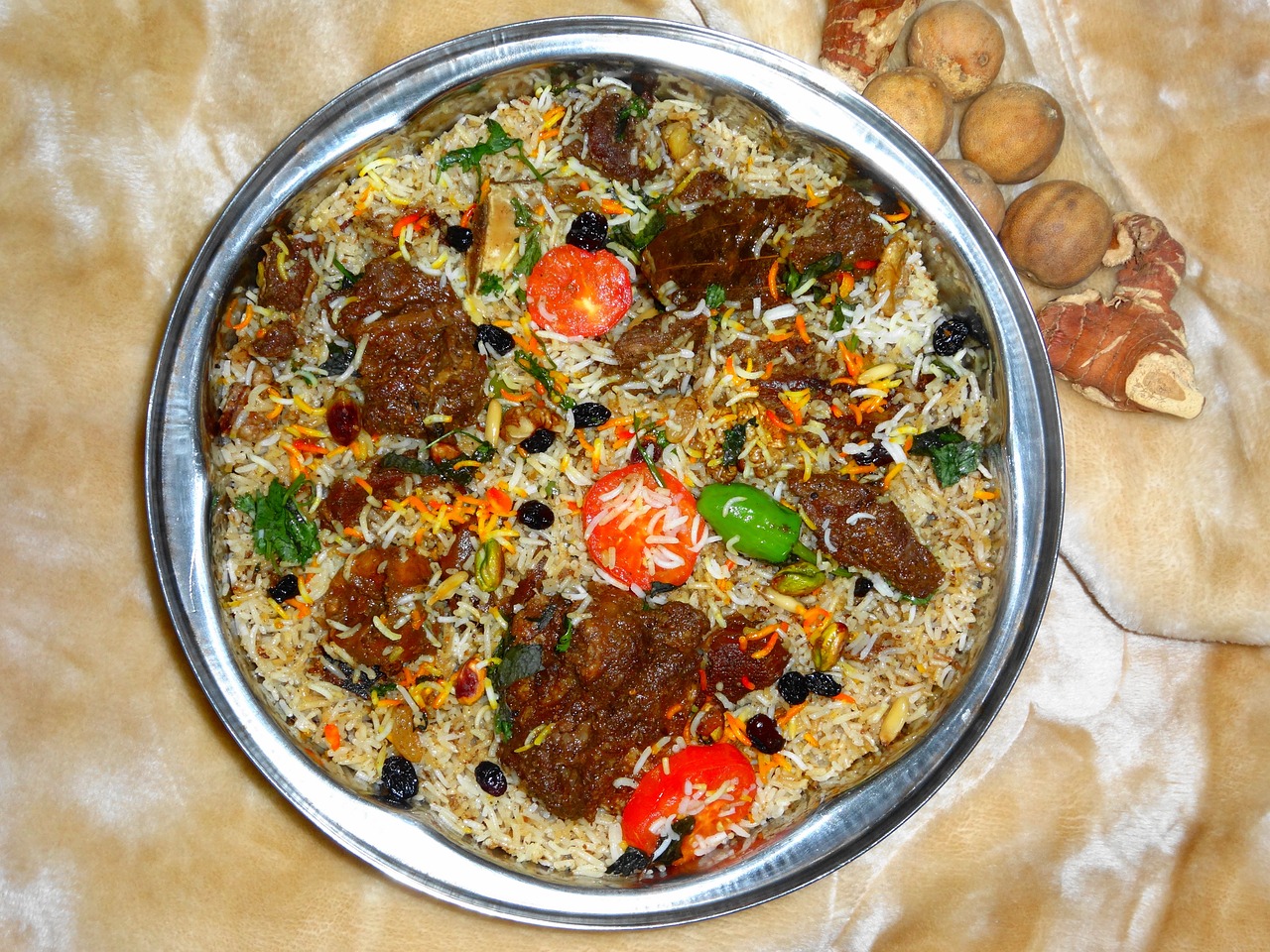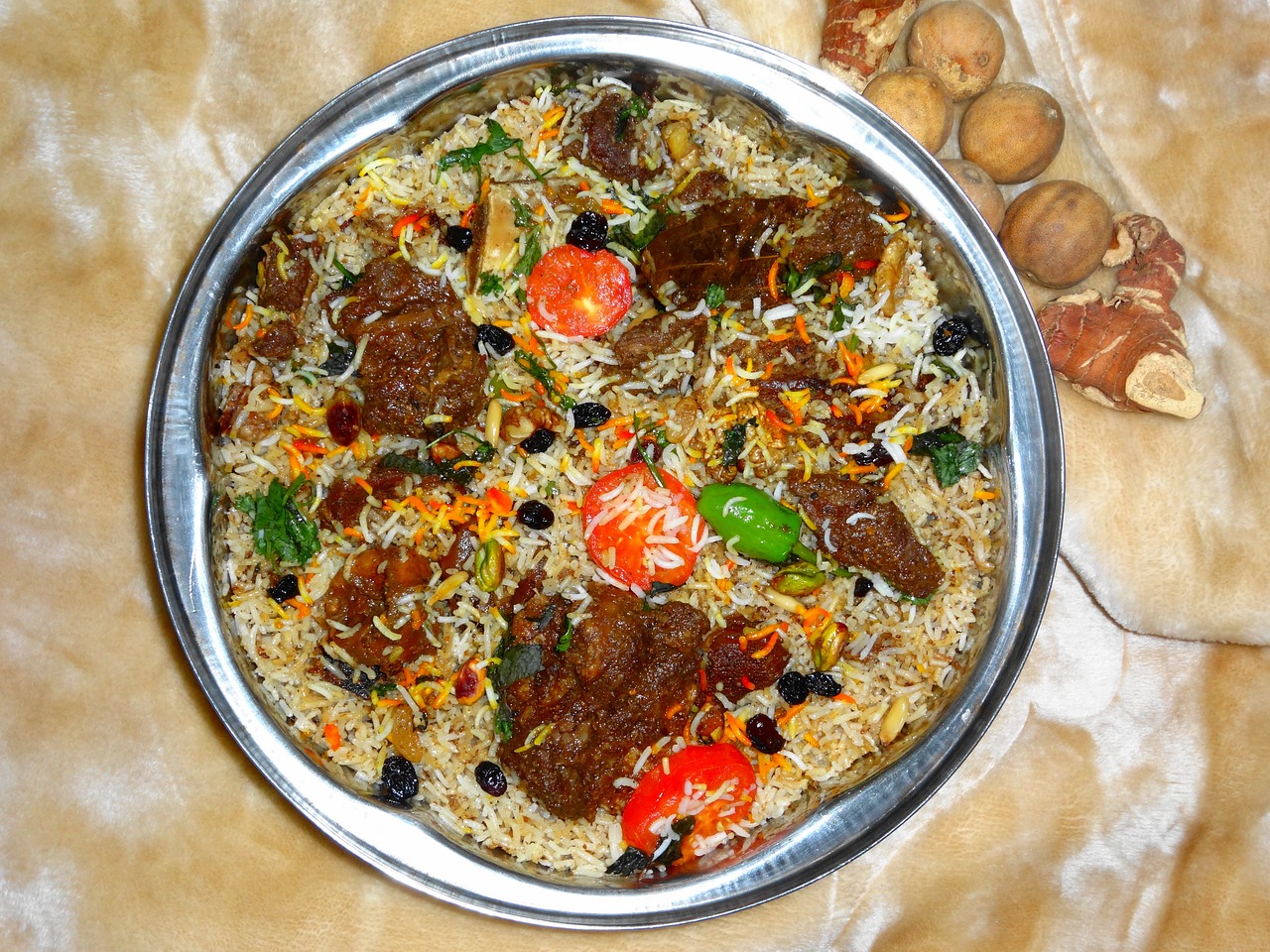Unlock the Flavors of Arabia: Top 5 Saudi Arabian Recipes You Need to Try

Are you ready to embark on a culinary journey to Saudi Arabia? Get ready to tantalize your taste buds with the exotic and aromatic flavors of traditional Saudi Arabian cuisine. From fragrant spices to succulent meats, Saudi Arabian dishes are a true explosion of taste and culture. Let's dive into the top 5 Saudi Arabian recipes that you absolutely must try.
1. Kabsa: Known as the national dish of Saudi Arabia, Kabsa is a flavorful rice dish made with fragrant basmati rice, tender meat (usually chicken, lamb, or goat), and a blend of aromatic spices like cardamom, cinnamon, and cloves. This dish is a true representation of the rich culinary heritage of Saudi Arabia.
2. Mandi: Another beloved Saudi Arabian dish, Mandi features tender, slow-cooked meat (often chicken or lamb) that is infused with smoky flavors from the traditional underground oven. Served with fragrant rice and a side of tangy tomato chutney, Mandi is a must-try for any food enthusiast.
3. Samosa: While samosas are popular worldwide, the Saudi Arabian version offers a unique twist. These savory pastries are filled with spiced meat, onions, and peas, then deep-fried to crispy perfection. Enjoyed as a snack or appetizer, Saudi Arabian samosas are a delightful explosion of flavors.
4. Arabic Coffee: No Saudi Arabian meal is complete without a cup of traditional Arabic coffee. Made from lightly roasted coffee beans and infused with cardamom, this aromatic beverage is served in small cups and symbolizes hospitality and friendship in Saudi culture.
5. Al Kabsa: Al Kabsa is a delicious and hearty dish that features fragrant rice cooked with tender pieces of chicken or lamb, vegetables, and a medley of spices. This dish is a staple in Saudi Arabian households and is often served during special occasions and celebrations.
Get ready to unlock the flavors of Arabia with these top 5 Saudi Arabian recipes that will transport you to the bustling markets and vibrant kitchens of Saudi Arabia. Whether you are a seasoned foodie or an adventurous home cook, these dishes are sure to surprise and delight your taste buds with every bite.
Traditional Saudi Arabian Cuisine
Traditional Saudi Arabian cuisine is a delightful journey into the heart of Arabian flavors, steeped in history and tradition. The cuisine of Saudi Arabia is a reflection of its rich cultural heritage, with dishes that have been perfected over centuries. From fragrant rice dishes to succulent grilled meats, Saudi Arabian cuisine offers a diverse range of flavors that are sure to tantalize your taste buds.
One of the most iconic dishes in Saudi Arabian cuisine is Kabsa, a flavorful rice dish that is often made with fragrant basmati rice, tender meat, and a blend of aromatic spices. The combination of spices such as cardamom, cinnamon, and cloves gives Kabsa its distinctive taste, making it a favorite among locals and visitors alike.
Mandi is another popular dish that is a staple in Saudi Arabian households. This dish features tender, slow-cooked meat that is infused with a blend of spices and served over fragrant rice. The meat in Mandi is so tender that it practically melts in your mouth, creating a truly unforgettable dining experience.
For those with a sweet tooth, Saudi Arabian cuisine offers a variety of delectable desserts, such as Kunafa and Baklava. Kunafa is a rich, cheesy dessert that is topped with a crunchy layer of shredded pastry and soaked in sweet syrup, while Baklava is a flaky pastry filled with nuts and sweetened with honey. These desserts are the perfect way to end a traditional Saudi Arabian meal on a sweet note.
When it comes to beverages, Saudi Arabian cuisine offers refreshing options such as Qamar al-Din, a popular apricot drink that is enjoyed during the hot summer months. This sweet and tangy drink is the perfect way to cool off and quench your thirst after indulging in a flavorful Saudi Arabian meal.
Overall, traditional Saudi Arabian cuisine is a celebration of bold flavors, aromatic spices, and hearty ingredients that come together to create a culinary experience like no other. Whether you are a food enthusiast or simply looking to explore new flavors, Saudi Arabian cuisine is sure to surprise and delight your taste buds with its explosion of flavors.
Modern Twists on Classic Recipes
When it comes to Saudi Arabian cuisine, tradition meets innovation in a delightful fusion of flavors. Modern twists on classic recipes offer a fresh take on familiar dishes, bringing a touch of creativity to the dining table. Imagine the traditional Kabsa, a beloved Saudi dish featuring fragrant rice and tender meat, now infused with a modern twist that elevates its taste to a whole new level.
One popular modern adaptation is the fusion of traditional Saudi flavors with global culinary trends. Picture a succulent Shawarma wrap with a twist, where the traditional spiced meat is paired with a tangy avocado salsa, creating a harmonious blend of textures and tastes that tantalize the taste buds.
Furthermore, innovative cooking techniques have revolutionized classic Saudi recipes, offering a contemporary spin on timeless favorites. From sous vide cooking methods to molecular gastronomy, these modern approaches bring a touch of sophistication to traditional dishes, enhancing both presentation and flavor.
Additionally, the use of unconventional ingredients adds a unique flair to classic Saudi recipes, pushing the boundaries of culinary creativity. Imagine a traditional Saudi dessert like Kunafa reinvented with a modern twist, incorporating exotic fruits or artisanal chocolates to create a decadent and indulgent treat that surprises and delights with every bite.
In essence, modern twists on classic Saudi recipes breathe new life into traditional dishes, inviting food enthusiasts to embark on a culinary adventure that combines the best of both worlds. By blending heritage with innovation, these reimagined recipes showcase the dynamic evolution of Saudi Arabian cuisine, ensuring that each meal is a delightful surprise waiting to explode with flavor.
Regional Influences on Saudi Arabian Cooking
Saudi Arabian cuisine is a delightful tapestry woven from a variety of regional influences that have shaped the country's culinary traditions. From the coastal regions of the Red Sea to the deserts of the Arabian Peninsula, each area brings its own unique flavors and cooking styles to the table.
In the western coastal region of Saudi Arabia, you can find dishes heavily influenced by the Red Sea. Seafood takes center stage in these areas, with dishes like Sayadieh, a fragrant fish and rice dish, being a popular choice. The use of spices such as cumin, coriander, and turmeric adds a depth of flavor that is characteristic of this region.
Traveling to the southern region of Asir, you will encounter dishes that reflect the mountainous terrain and cooler climate. One such dish is Kabsa, a flavorful rice dish typically made with meat, vegetables, and a blend of aromatic spices. The use of cardamom, cinnamon, and cloves sets this region's cuisine apart.
Heading to the eastern region of Saudi Arabia, you will find dishes influenced by the Persian Gulf. Here, seafood plays a prominent role, with dishes like Maraq Samak, a spicy fish stew, being a favorite among locals. The use of saffron, dried limes, and fenugreek gives these dishes a unique and tangy flavor profile.
As you venture into the central region of Najd, you will discover dishes that are hearty and flavorful, reflecting the desert landscape. One such dish is Kabsa Najdi, a rice and meat dish that is rich in spices such as black lime, cloves, and bay leaves. The use of dried fruits like apricots and raisins adds a touch of sweetness to these savory dishes.
Each region of Saudi Arabia brings its own distinct culinary traditions to the table, creating a diverse and vibrant food culture that is a true reflection of the country's rich history and heritage.

 yazar
yazar 





